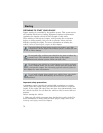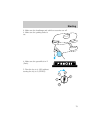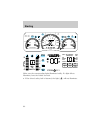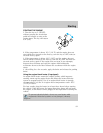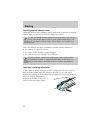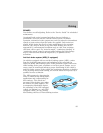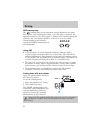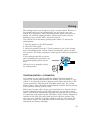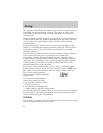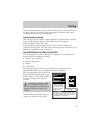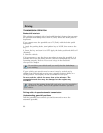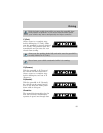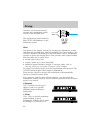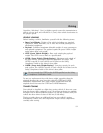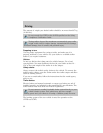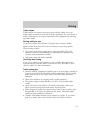
The Traction Control system will allow your vehicle to make better use
of available traction on slippery surfaces. The system is a driver aid
which makes your vehicle easier to handle primarily on snow and ice
covered roads.
During Traction Control operation you may hear an electric motor type
of sound coming from the engine compartment and the engine will not
“rev-up” when you push further on the accelerator. This is normal
system behavior.
If you should become stuck in snow or ice or on a very slippery road
surface, try switching the Traction Control system off. This may allow
excess wheel spin to “dig” the vehicle out and enable a successful
“rocking” maneuver.
If the Traction Control system is cycled excessively, the brake portion
of the system will shut down to prevent the rear brakes from
overheating. A limited Traction Control function using only engine
torque reduction will still control wheels from over-spinning. When the
rear brakes have cooled down, the system will again function normally.
Anti-lock braking is not affected by this condition and will function
normally during the cool down period.
If the engine coolant temperature is below −23°C (−10°F) the engine
torque reduction portion of the Traction Control system is NOT active.
The system will operate normally when the engine coolant warms up.
The traction control indicator
flashes during a Traction Control
system event.
If the traction control indicator
comes on and stays lit, either:
• the Traction Control system
requires service, or
• the customer has disabled the
system using the traction control switch.
The Traction Control system will be on every time you turn the ignition
key from OFF to ON until you deactivate the system using the traction
control switch in the glove compartment.
STEERING
Your vehicle is equipped with power steering. Power steering uses energy
from the engine to help steer the vehicle.
TRAC
CNTL
Driving
86



